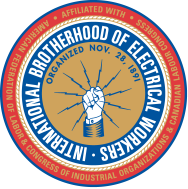The following appeared in an op-ed written for The Province by IBEW International Representative, Laird Cronk, and Irene Lanzinger, President of the BC Federation of Labour.
B.C.’s chronic shortage of skilled workers and the faults of our skills training and apprenticeship system were spotlighted recently by the results of a survey of construction companies.
Some of the survey findings were positive. Companies report optimism that their sector will continue to grow in the year ahead—and that’s positive given the important role the construction industry plays in our economy. And predicted wage increases above the inflation rate are good for workers struggling with affordability issues in B.C., the country’s most expensive place to live.
But underneath that optimism is a legitimate concern that skills shortages will worsen for the construction sector and be a brake on economic growth. In our view that pessimism reflects the failure of B.C.’s training system and our inability to produce the skilled workers required to build infrastructure to drive economic and social growth.
Other provinces are struggling with the same challenges. But the shortcomings here are a distinctly made-in-B.C. problem. It’s the legacy of 16 years of the B.C. Liberals mismanaging the system after they gambled on a risky and failed overhaul.
The B.C. Federation of Labour has just completed an analysis of the Liberal’s radical reshape (available at bcfed.ca/failedexperiment). Here’s what we found. Training for skilled trades was deregulated. Comprehensive training programs were chopped into modules. Hours of mandatory classroom learning and on-the-job practical work experience for apprentices were cut to the lowest levels in Canada.
And the requirement, called compulsory certification, that work in complex and dangerous fields like electrical, refrigeration, crane operation and plumbing be performed by a trained, certified journey person was dropped. It meant that anyone could install a complex wiring job, or operate a towering crane on a building site, or do work on refrigeration systems like ice rinks.
Similarly, rules covering the supervision of on-the-job training for apprentices were also diminished. Across Canada, only a certified journey person in a trades field can teach in the classroom and oversee the work of an apprentice. But in B.C. instruction and work supervision by uncertified tradespeople are allowed.
Overall, training became narrow and shallow. It created a workforce that lacks the depth and breadth of skills to meet current needs. Critically, while registrations in trades training and apprenticeship programs have increased, overall apprenticeship completion rates declined compared to a decade ago and relative to other provinces. And we believe the changes and their impact on health and safety training (or lack thereof) contribute to B.C.’s record as the most dangerous place for on-the-job-injuries in Canada.
It’s crucial to understand how the B.C. Liberals’ failed experiment contributed to the shortage of skilled workers. But it’s more important to find a new path forward. In the short term, there are some practical measures that will help the Horgan NDP government address the skills gaps including:
• providing more concrete work experience opportunities on public and private projects to enable current apprentices who are bottlenecked in the system to complete their training.
• setting minimum apprenticeship levels on public infrastructure projects and strengthening requirements for hands on supervision, mentorship, and training.
• returning to full scope training for all trades, and compulsory certification.
The labour movement can bring a lot to the table to help develop the substantive changes needed to solve the skills shortage. Unions in B.C. invest millions of dollars every year to deliver highly successful training programs with much higher than average completion rates. And at post-secondary institutes across the province, union members provide classroom training for thousands of apprentices in dozens of different trades.
Long-term, sustainable solutions to solve B.C.’s skilled workforce shortages can only be achieved through collaboration between government, employers and unions. Our economic and social prosperity clearly depends on investing in people to create a training culture in all our workplaces.



